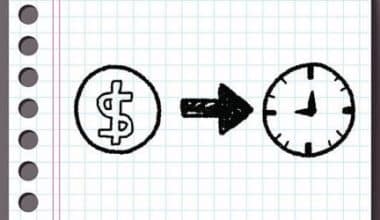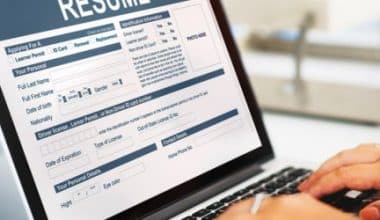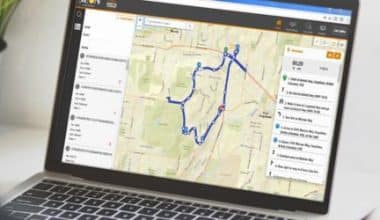It’s only human to wonder where you stand in the recruiting process after a job interview, especially if things went well. A superb follow-up email you sent after an interview demonstrates your enthusiasm for the employment and your willingness to go the extra mile. After a job interview, there are generally three basic emails you can send: one to your interviewer(s) right after the session, one to follow up in case you haven’t heard back from them in a timely manner, and one to keep in touch for networking reasons. Regardless, there are many traps you should avoid when sending a follow-up email after your interview. In this guide, we’ll discuss the best ways to send a follow-up email after the interview and how to write one after an application.
The Significance of Following up After Interviews
After a job interview, sending a follow-up email might serve more purposes than merely being polite. It gives the candidate a chance to express their continued interest in and passion for the position, and it keeps them in the hiring manager’s thoughts.
It’s common practice to send a follow-up email following an interview, and it can help your application in a number of ways. One benefit is that it allows you to emphasize the value you would bring to the organization you are applying with and to reiterate your enthusiasm for the opportunity. Also, it helps you leave a good impression on the recruiting manager by demonstrating your thoughtfulness and appreciation.
It demonstrates your enthusiasm for the job and your willingness to put up the extra effort. Also, it offers you the chance to answer any queries or worries the recruiter may have had but was unable to address directly during the interview.
Also, because they demonstrate the applicant’s attention to detail and commitment, employers typically like follow-up emails after interviews. Occasionally hiring managers will even base their choice of an employee on the caliber of the thank-you cards. Sending one can therefore make the difference between two candidates who are equally qualified
So, it might be best to try and write an engaging follow-up email after your interview. This might help give you a competitive edge, differentiate you from other applicants, and increase your chance. But how do you do it?
How to Send a Follow-up Email
Here is a guide on how best you can write a follow-up email after an interview;
#1. Start Your Email Using The Subject Line
The email recipient’s first impression of your message will be based on the subject line. If you and the person in charge of responding to your interview inquiries have already been exchanging emails, it is generally advisable to continue the conversation by responding to the most recent exchange.
When starting a new message, it’s important to include a subject line that will pique the recipient’s interest. This could include a thank you note and a reference to the conversation that took place during the interview. You should, however, strive for the same formality and consistency with the tone of your interview.
Your subject line, for instance, might be,
- “Nice speaking with you today”
- “Thank you for interviewing with me,” or
- “It was nice meeting you today.”
#2. Make Sure to Add an Appropriate Salutation
In the opening of your letter, address the receiver using their name. You may address the interviewee by their first name if you have already established a personal rapport with them. On the other hand, if you are not familiar with the person or are unsure of how to address them, it is OK to use their last name.
Good salutations include, “Dear Maria,” “Dear Ms. Williams,” “Dear Mr. Watson,” etc.
#3. Compose the Body of Your Email Introducing the Reason for Your Email
A follow-up email’s body should be incredibly brief and direct. Begin by thanking the interviewer for their time while also reminding them of the date of the interview.
As an illustration, you may say something like;
“It was a joy meeting with you and getting to learn more about the [post for which you apply] role, so I appreciate you taking the time to meet me this morning for the interview”
#4. Reiterate Your Desire for the Job
Reiterate your enthusiasm for the job while addressing particular interview topics and/or facts. Mention the specific qualities that make you the ideal candidate for the role, or how your background and interests match those needed for the post.
Example: “I was really curious to learn about [discuss an aspect of the business or job that attracted you during the interview].” “I’m very thrilled about the possibility of [explain how you would benefit the organization or how your skills and interests match the requirements of the position or the organization].”
#5. Add a Closing Paragraph
Finish with a succinct paragraph that discusses the following stages and inquires as to if any additional information is needed from you (unless this was already addressed during the interview). You can state that the requested information has already been supplied, given, or is included with this email if it was requested during the interview.
Example: “If there are any other instructions or requests you have for me in the interim, kindly let me know.” “I’m interested in hearing from you.”
#6. Add a Signature as the Last Touch to Your Email
Include a formal or semiformal closing statement, as well as your name and contact information, depending on the level of formality established in your earlier discussion with the receiver. Whereas “Sincerely” and “Respectfully” are considered formal, “Best” and “Regards” are more informal.
Here’s an example: “Best regards, [Your Name], [Your Contact Info]”
#7. Review Your Emails Before Sending
Before hitting “send,” read your email again to be sure there are no grammatical problems.
Key Points to Keep In Mind
- Be short and clear
- Be honest
- Keep it professional
- Stick with your points of contact.
- Be mindful of their timeline.
- Proofread and spell-check before sending
Is It Correct to Say Gentle Follow-Up?
Generally, gentle reminders and follow-ups often provide better results. Aggressive sales pitches can backfire if you aren’t there to be present and use nonverbal indicators. Nonetheless, there is merit in being upfront and honest, particularly if your previous communications were disregarded.
How Do You Send a Follow up Politely?
- Pick the appropriate time for follow-up emails
- Start by giving a brief, kind reminder.
- Set the scene for a considerate follow-up email
- Request an update
- Provide a due date
- Be particular
- Keep it short
- Be courteous and cordial
How Do You Say Just a Quick Follow-Up?
This is just a follow-up to an earlier email I sent you. I know you’re probably quite busy, but if you could check the email and get back to me as soon as possible, that would be great. If I don’t hear from you by Friday, I’ll give your workplace a call.
How Can You Formally Request the Outcome of an Interview?
If you haven’t heard back from the interviewer after the allotted period has passed, it’s appropriate to get in touch with them and inquire as to the next steps. Make it clear that you’re eager to hear the outcome. But, avoid sounding forceful or insistent. Once you have received the outcome, you should thank them for their time. The most effective and courteous way to follow up is by email. Unless the interviewer specifically gives you permission to do so, you should not call them.
How Often After an Interview Should You Follow Up?
That is a question only the interviewer and the firm can answer. The standard, however, recommended number of follow-ups after an interview is once or twice. Nevertheless, it is preferable to err on the side of excessive persistence rather than insufficient. It’s generally fine to send another reminder email if you haven’t heard back from the firm about your interview within a week or two. You can contact them via email or phone, but be careful to tailor your message to avoid seeming like spam.
When to Send a Follow-up Email
Generally, you can send a courteous follow-up email within 24-48 hours after the job interview. If you do it too soon, it can be interpreted as a show of desperation or a lack of other options. Meanwhile, if you send it too late, the interviewer might assume you’ve lost interest.
Sending a second follow-up email as a polite reminder that you are still waiting for feedback is appropriate if more than a week has passed since your initial follow-up email and you have still not heard anything. This follow-up email should be shorter but still be just as warm, enthusiastic, and professional as the first.
Follow Up Email After an Application
Many prospective employees neglect to send a follow-up email after submitting an application for a position. Sending such a message, however, demonstrates your genuine interest in the job and your willingness to go above and beyond to get it.
Furthermore, it shows that you care about the little things and have decent manners, both of which will increase your appeal to future employers. Even a quick email can let you express your enthusiasm for the job again, underline your qualifications, and/or respond to any queries the recruitment team may have regarding your application during the interview.
Another very practical justification for sending a follow-up email is the fact that, occasionally, an application can just get lost in the system. Sending such a note ensures that your application won’t be disregarded. Perhaps your follow-up email will be the deciding factor in the hiring manager choosing you above the other applicants.
Nevertheless, avoid addressing topics like compensation negotiations, debating vacation days, and other similar ones in these emails. These conversations shouldn’t be had at this point since you could come off as impatient and overly eager.
Below are instructions on how to best write a follow-up email after an application;
#1. Get More Information About the Hiring Manager
To enhance the likelihood that your email will be read by a decision-maker, be sure to do your homework and address it to the right person. Check the job description for a contact person if you submitted your application online. You may also examine if the hiring manager is listed on the company’s website. If neither of those methods yields results, you may always give the organization a call and inquire about the hiring manager’s name and email address.
#2. Use Your Relationships
Look through your personal and professional networks to find out whether someone you know presently is an employee at the company or appears to know a person who is. Knowing a current employee of the organization can give you an advantage in the employment process and can also help you gain the contact information you require.
#3. Be Specific in the Subject Line
Include your name and the job title you’re applying for in the subject line of your email. This will ensure that the email subject line is clear and concise before the hiring manager ever opens it.
#4. Try Being a Professional
This may be the first time the committee has seen you, as the recipient may have yet to look over your application materials. Use only appropriate language while sending an email. Use the hiring manager’s name or a formal salutation to kick off your cover letter. Express your appreciation for them thinking of you for this particular position.
#5. Be Concise
If you send a lengthy email to a hiring manager or recruiter, they may not read it all, or worse, delete it altogether. Hence, you should strike a balance between providing enough detail to answer their questions and making the email too long to read in one sitting. The hiring manager will be able to decide whether or not they can assist you with only a cursory reading of your cover letter.
#6. Concentrate on Your Credentials
Remind the hiring manager briefly of your qualifications for the job. In your follow-up email, you might want to mention any recent successes—specific victories you have had at work since applying—if you have any.
#7. Add Your Supporting Documents
Attach the documents you submitted with your initial application to make it easier for the hiring manager to review them. Inform them that the files are attached.
#8. Ask Questions
This is a fantastic time to ask any questions you may have regarding the job or the application process. Add your inquiries to the email’s final paragraph, but don’t bombard them. If you only have one or two queries, the email won’t take too much time to answer.
#9. Include a Call to Action Option
In your call to action, make it clear that the purpose of this email is to secure an interview. Inform them that you are interested in conducting interviews, and provide contact information with a time and date.
#10. Proofread Meticulously
After drafting your email, thoroughly proofread it and do some editing on it. This is a crucial stage because your follow-up letter is an additional chance to impress the hiring manager with your skills.
Conclusion
After the interview, sending a thank-you and follow-up email to the interviewer(s) is a great way to demonstrate your interest in the position and show your appreciation for their time. It can also be an excellent chance to restate your credentials and let them know that you are still available.
Furthermore, it shows that you care about the little things and have decent manners, both of which will increase your appeal to future employers. Even a quick email can let you express your enthusiasm for the job again, underline your qualifications, and/or respond to any queries the recruitment team may have regarding your application during the interview.






